This posting either has two pictures or nine pictures depending upon your sensitivity.
The survival of a species depends upon two things: food and reproduction. This is about reproduction.
This posting is also about Wild Turkeys, a bird that was unknown in the interior of BC only about 50 years ago. At the urging of hunters south of the border, they were planted in Washington and Oregon 50 to 60 years ago. They soon crept across the border. First here in only small numbers, they are now rather common and are described by eBird as exotic, but naturalized for the Central Kootenay region.
A vast majority of birds form pair bonds, either for a season or for life. Some adopt seasonal or breeding plumage; some do delightful male-female courting behaviours before they mate. However, very few in this region alter their appearance the way Wild Turkeys do. Think of swans. They may have beautiful courtship behaviours, but neither the male nor female bird drastically alters its appearance before they mate.
Birds that do not form a pair bond often have a noticeable courtship display and sometimes it is truly outlandish, and bizarre. It is to this latter group (not forming pair bonds) that the Wild Turkey belongs. Indeed, the sexual display of the male Wild Turkey is perhaps the most striking one in North America.
This is about the mating of the Wild Turkey. You can view the first two pictures and then stop.
This male Wild Turkey is in its full courtship display. It fans its tails, and puffs body feathers. Its featherless head is red, white, and blue with a snood (long red flesh that extends from between the eyes), caruncles (lumpy fleshy folds that wrap around the base of their neck like a white or red scarf weighed down by three bulbous masses), wattles (a thin fold of skin beneath their chins), and a beard (hairs extending from breast). They also strut, gobble, and drum their wings against their bodies.
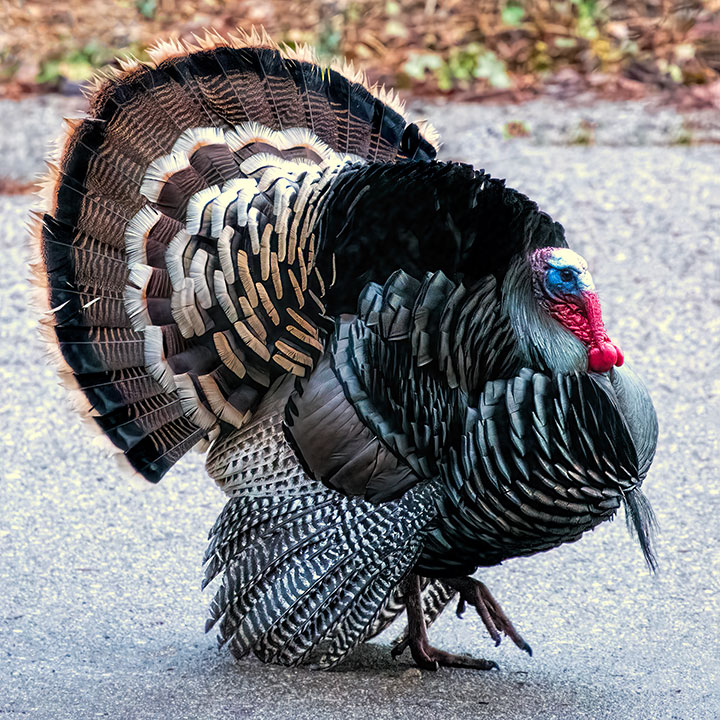
When they mate, the female lifts its tail and the male lowers its tail until the cloacae come in contact so semen can be exchanged. In this picture most of the feathers belong to the male. Only the female’s head and a few wing feathers are visible. Photo by Cynthia Fraser.

OK, that is end of the first two pictures. What follows are more detailed photos of a separate mating act taken earlier the same morning.
When a female’s pheromones have arisen sufficiently, she will accept the advances of the male and will crouch down in front of him. Some of these shots were taken through tree branches which clutter the pictures. Note, the male’s caruncles are white at this point. They will become red by the end.
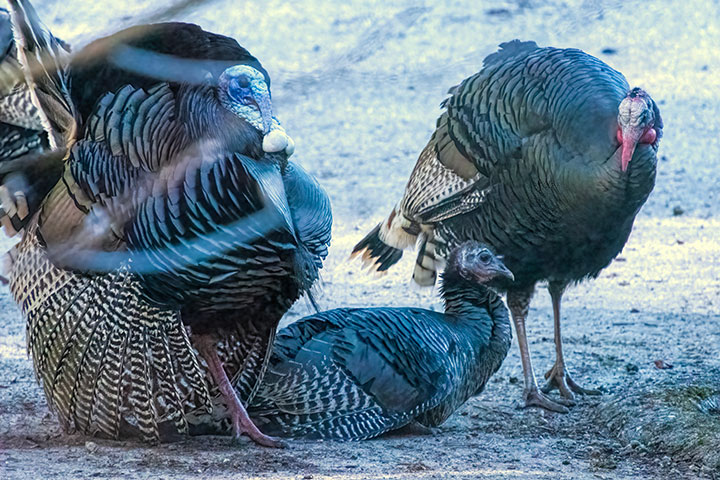
He then climbs on top of her.
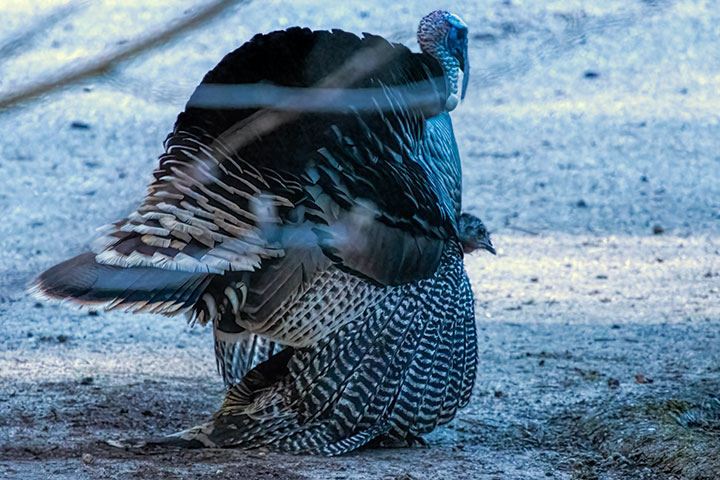
The male stands atop the female. There then ensues a lifting and lowering of the tails, the object being for the male to bring his cloaca in contact with her cloaca.
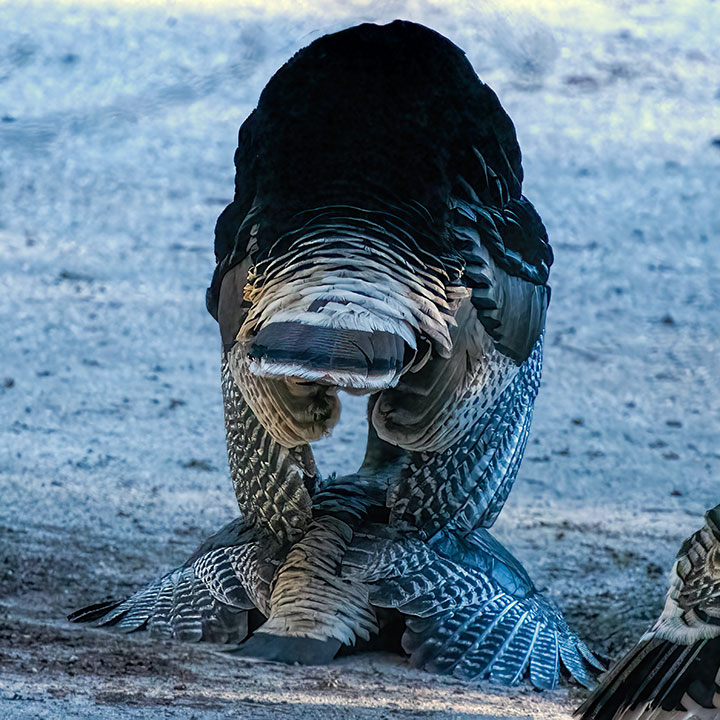
Here, the female has lifted her tail and has revealed her cloaca.
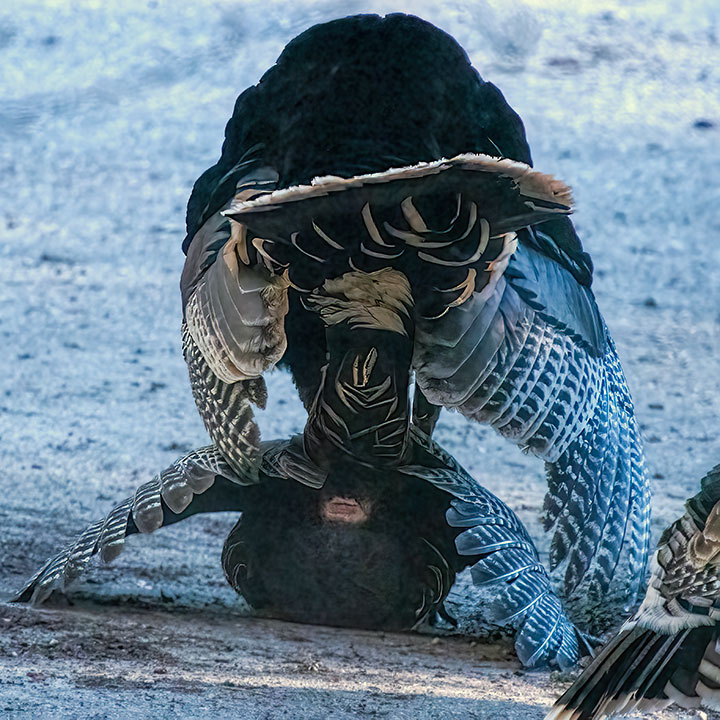
Mating: the male lowers his tail and the two cloaca touch. He ejects semen from his cloaca into her cloaca.
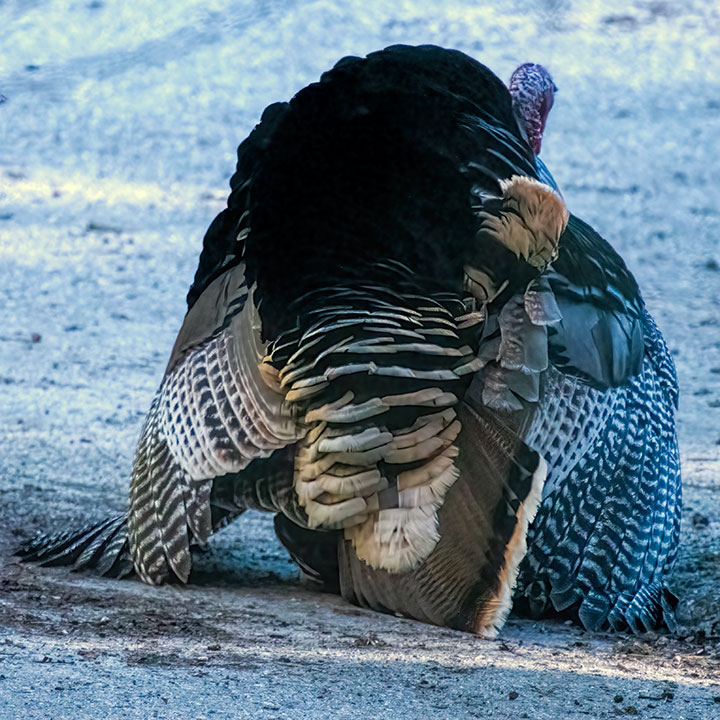
The male climbs off, but briefly you can see the semen on her cloaca (along with some running down from it).
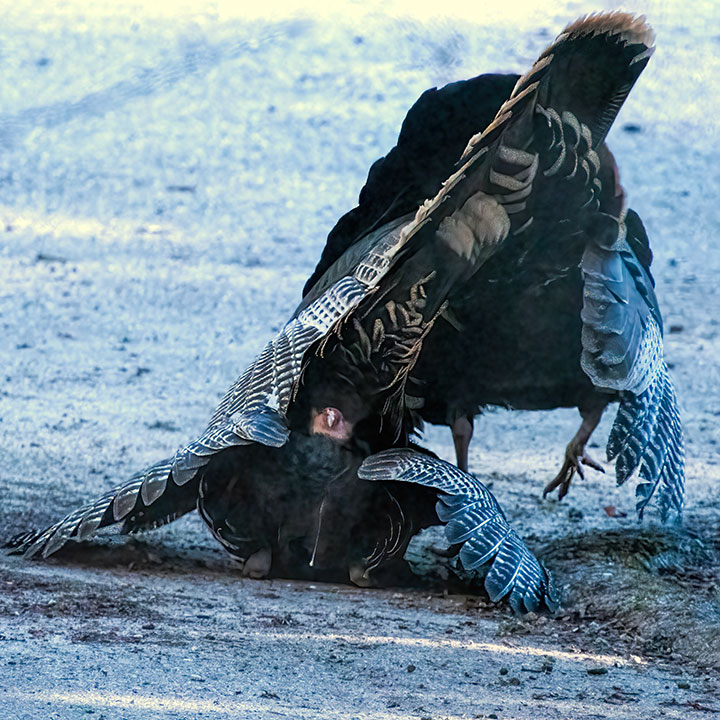
They separate and probably have nothing further to do with each other. Notice that the male’s caruncles which were white at the beginning, have now turned red.
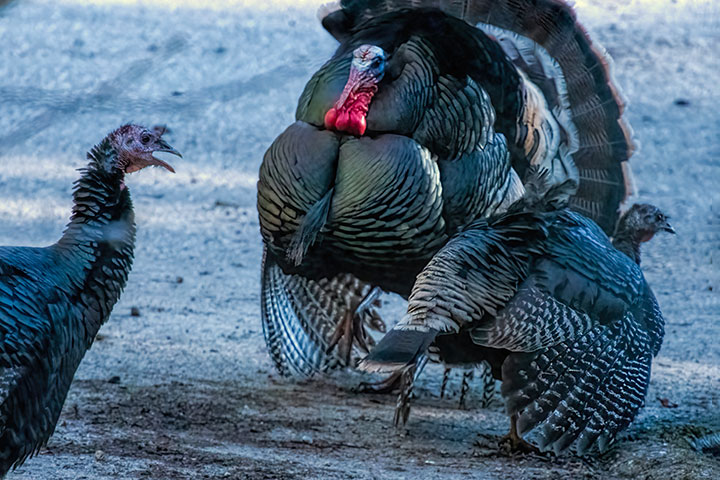

Fascinating. Thanks for the lesson in turkey mating behavior. I’ve wondered how the arrival of turkeys has impacted local ecology. Watching them on the ground it seems like they’d be relative easy pickings for bobcats, fox, coyotes, wolves, mountain lions, etc. So maybe a bonus for predators? I assume an adult might be too large for hawks except perhaps eagles, though I imagine the young are a target as with waterfowl. But do the turkeys compete with any native species like grouse for food or territory?
Stephen, those are interesting speculations. But I only know one thing about the Wild Turkey and predators. Since it settled in near my house, I have lost my favourite long-time visitor: some Ruffed Grouse. Like the Wild Turkey, the Ruffed Grouse does not form pair bonds and the male does adopt an interesting look when it is courting.
Being an Osprey fan and watching the cams, I have seen this many times. I must say though the “in detail” pictures were awesome. I now no “the rest of the story”. Thanks so much!